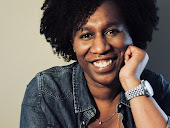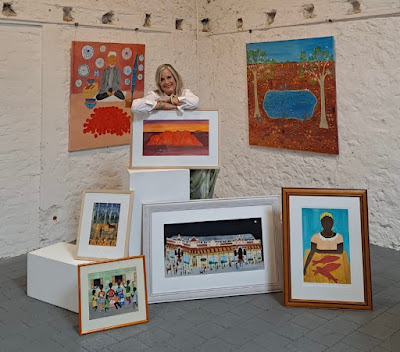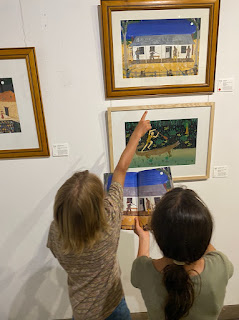A few summers ago, when I wrote DADDY SPEAKS LOVE, I hoped each word would speak love, and through that love, truth—something I strive for in all my work (that and possibilities). For E.B. Lewis, he wanted his illustrations “to convey a strong sense of feeling and emotion.”
 |
| DADDY SPEAKS LOVE author, Leah Henderson & illustrator, E.B. Lewis |
As we near the end of February and the month-long celebration of Black History, I wanted to take a moment to ask a few brilliant debut and up and coming Black authors and illustrators—who speak love into their work each and every day—what they strive to capture, highlight, explore, or reveal in their stories?
 |
| FLY author, Brittany J. Thurman |
Brittany J. Thurman, author of FLY, illustrated by Anna Cunha said: I always think back on the time I spent with my elders as a kid. Many of those elders are ancestors now. Back then, I didn’t understand their protection, their way of keeping me safe, their way of showing what it meant to be loved. Today, I see every action of my elders, from my great-grandmother pulling me close to give her some “sugar” (a kiss), to my great-grandfather warning me not to eat the left-over communion crackers, it was all an act of love. Elders pop up in my work a lot. I seek to capture what it means to showcase and hold tight to their adoration. I hope to reveal through my words that we are all witnesses to our elder’s protection, to their dreams, which often become the life we are living today. Through them I strive, and I hope my work highlights the prowess our elders exhibited, a legacy that continues with us today.
 |
| SHOW THE WORLD! author, Angela Dalton |
Angela Dalton, author of SHOW THE WORLD!, illustrated by Daria Peoples wrote: When I look at the work that I’ve created to date, there are two distinct themes that thread throughout my stories. They are the value of independence and finding your path. I enjoy developing and presenting Black characters who are curious. This curiosity finds them exploring places and spaces they’ve been told they don’t belong or have been left out of seeing themselves in. They celebrate Black spaces with joy and pride, and embrace them with honor. As they look, feel, touch, and listen to the world around them they develop what I think is the most important element to claiming independence and one’s unique path – the courage to know that they deserve both. I hope that my work continues to show Black children that their courage and curiosity is a gift, and through both, they can find themselves and their way through life.
 |
| A HISTORY OF ME, author Adrea Theodore |
 |
| WHO ARE YOUR PEOPLE illustrator, Reggie Brown |
Reggie Brown, illustrator of WHO ARE YOUR PEOPLE, written by Bakari Sellers added: The thing that I strive to capture in my artwork is a sense of familiarity. I want you (the viewer) to feel like you’ve seen that tree or house. You know that group of kids. No matter how mundane, whimsical or fantastical the situation is, you can see yourself in it.
Tonya Engel, illustrator of YOUR LEGACY, written by Schele Williams offered: Coming from a generation of great storytellers, I was so lucky to discover that even as a shy, quiet child, I could tell my truth and speak volumes in my own way—through my art. Once I was sure of my footing and where I wanted to go with my work, I found that I was able to make canvases sing with a certain mystery, playing with visual metaphors, bright colors and symbolism, especially in my fine art originals. In my canvases, people and families are center-piece. Their layered skintones are made up of a kaleidoscope of colors; purples, yellows, reds, greens. The subjects are living, loving, tending the earth, experiencing loss or marveling at the beauty of existing on this wonder-filled earth. All things I long to see in art myself. What I hope the world gets out of my art at the end of the day is Love. Stories made of and made from Love.
 |
| Community Book Center, New Orleans, LA |
*Book links support the Community Book Center, a black-owned bookstore.*
 |
| Guest blogger, Leah Henderson |
Leah Henderson is also the author of the middle grade novels The Magic in Changing Your Stars,























